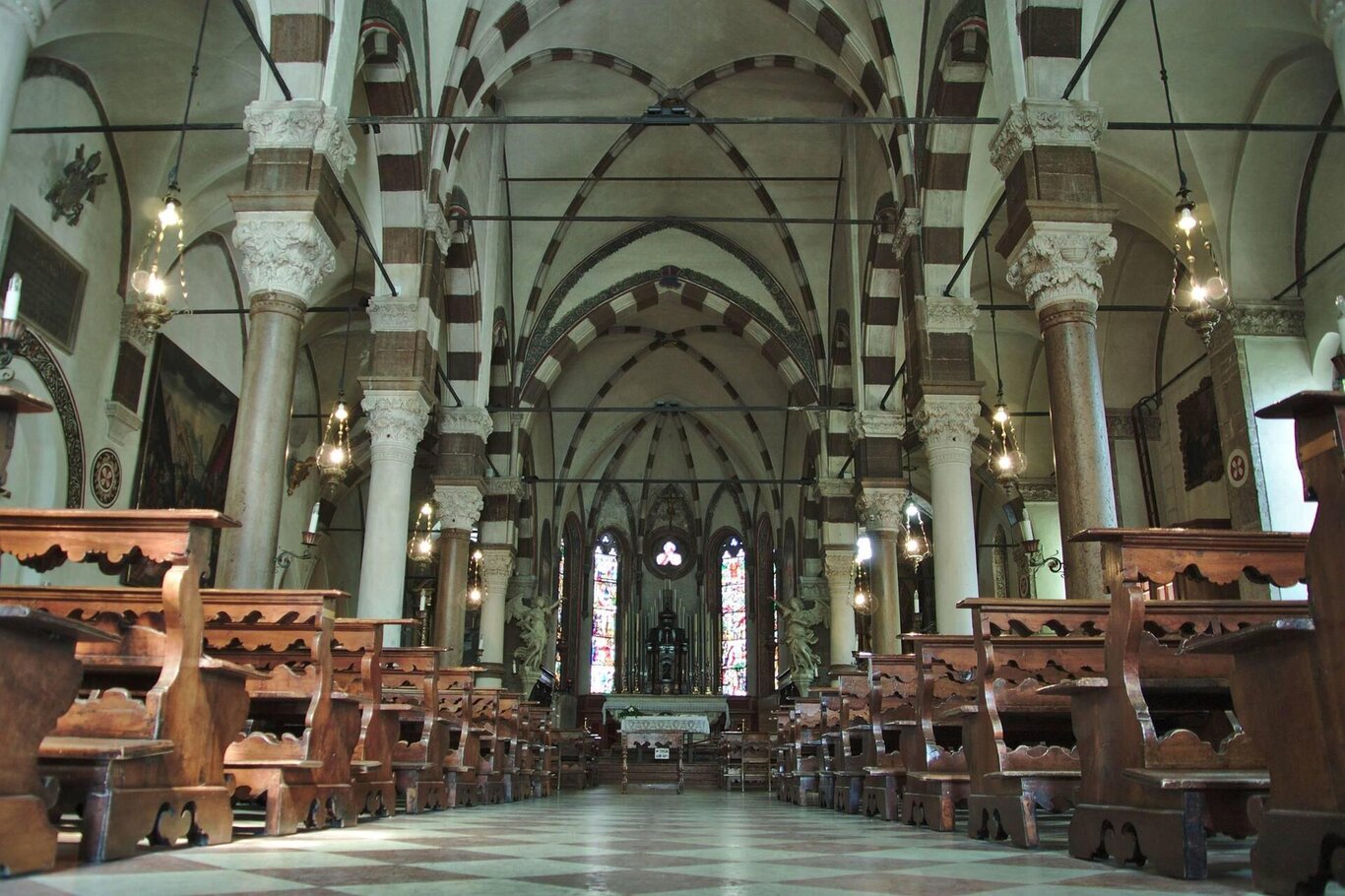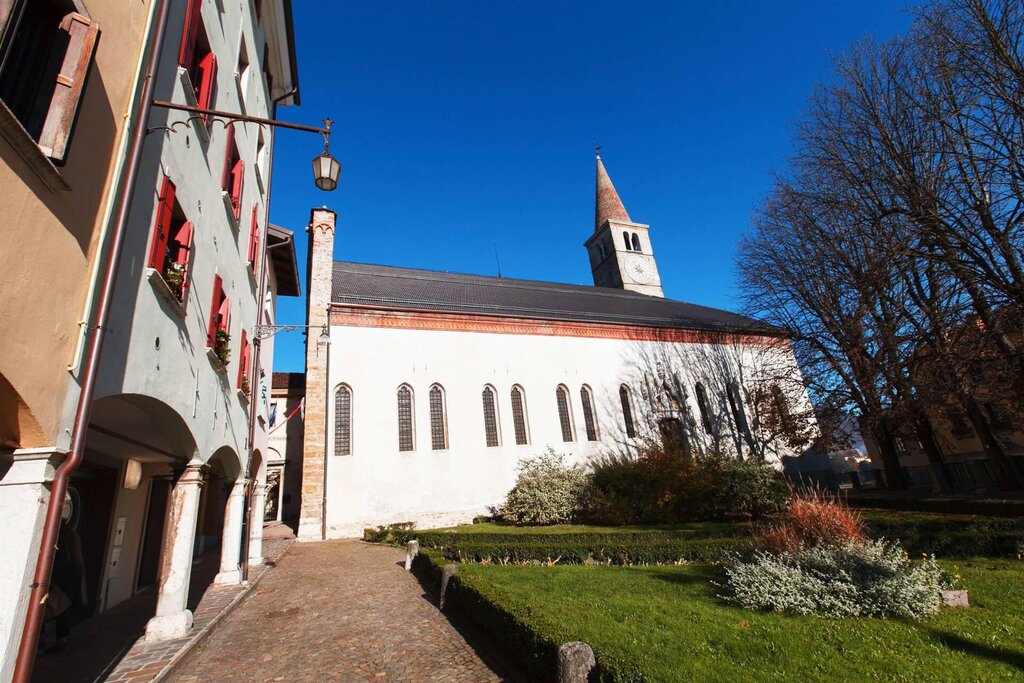Inside is of particular interest the Cesa chapel, built in 1485, with the large wooden altarpiece by Matteo Cesa (1425-1495) and a cycle of frescoes attributed in the past to Jacopo da Montagnana (1440-1499). To the left of the transept there is the Chapel of Our Lady of Sorrows, built in 1737, with the statue of Giovan Battista Alchini (18th century), a pupil of Brustolon, which reveals clear influences from beyond the Alps.
On the walls are paintings by Cesare Vecellio (1521-1601), Nicolò de Stefani (1520-1599), Francesco Frigimelica (1570-1649), Antonio Lazzarini (1672-1732) and others.
The church contains two large lamp-holder angels and a crucifix by Andrea Brustolon (1662-1732), from other churches that have disappeared in Belluno. Likewise, the Gothic portal on the south side, with the statues of the patron saints of Belluno, was transferred in 1893 from the suppressed church of S. Maria dei Battuti.
The building, consecrated in 1497, has distinctive Gothic features and at the same time Romanesque memories especially in the internal division of the spaces that are strongly suggestive thanks to the use of white limestone together with the red stone of Castellavazzo.
Around 1480 the foundations of the bell tower were excavated, which has a large clock with the original stone dial divided into 24 hours, to the German use of the sixteenth century and on that occasion the Roman sarcophagus of Flavio Ostilio and his wife was found, today kept in the citizen Crepadona Palace, seat of the Civic Library.


